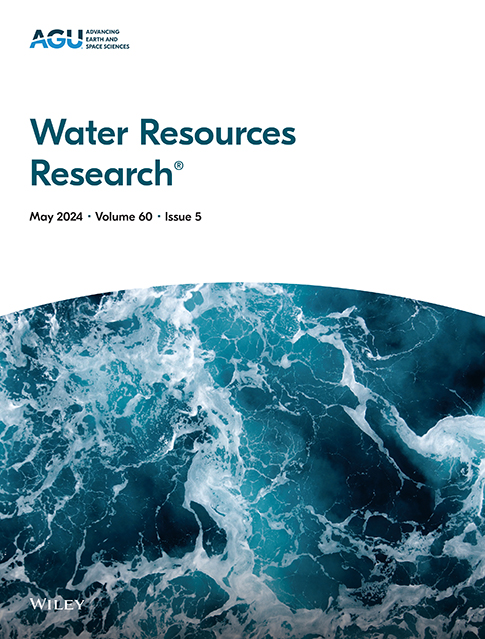从古气候重建中模拟极端气象干旱:一个亚稳态框架
IF 4.6
1区 地球科学
Q2 ENVIRONMENTAL SCIENCES
引用次数: 0
摘要
干旱具有普遍的社会影响,由于仪器记录中取样的干旱数量有限,因此仍然难以在观测上表征。利用代用气候档案(如基于树木年轮信息的气候档案)扩展观测记录是改善干旱发生概率估算统计基础的一种途径。此外,由于干旱是罕见的,并且具有多年持续时间和间隔时间的特点,因此必须设计和应用充分利用现有信息的统计技术,以提高我们量化最罕见干旱的能力。我们从一个公开的基于树木年轮的帕尔默干旱严重指数(PDSI)数据集,旧世界干旱地图集中提取数据,用于意大利的两个地点,在那里利用长降雨和温度观测时间序列进行有意义的比较。干旱事件是根据低于阈值PDSI的干旱亏缺量来定义的,并通过亚稳态极值分布(MEVD)进行研究,以量化极端干旱事件的发生概率。通过交叉验证方法,研究了MEVD分析中与各种可能假设相关的估计不确定性,并与传统的广义极值分布进行了比较。结果表明,与传统制剂相比,基于mevd的制剂具有更强的稳定性和灵活性。古气候数据与能够利用大多数现有信息的方法相结合,可提供更可靠的干旱复发时间估计,可用于设计更有效的干旱风险管理计划。本文章由计算机程序翻译,如有差异,请以英文原文为准。
Modeling Extreme Meteorological Droughts From Paleo-Climatic Reconstructions: A Metastatistical Framework
Droughts have pervasive societal impacts and remain difficult to characterize observationally, due to the limited number of droughts sampled in instrumental records. One approach to improving the statistical basis of drought occurrence probability estimation is to extend the observational record using proxy climatic archives, such as those based on tree-ring information. Additionally, since droughts are rare and characterized by multiannual durations and inter-arrival times, it is important to devise and apply statistical techniques that make full use of available information to improve our ability to quantify the rarest droughts. We extract data from a publicly available tree-ring based Palmer Drought Severity Index (PDSI) data set, the Old World Drought Atlas, for two sites in Italy where long rainfall and temperature observational time series are leveraged for a meaningful comparison. Drought events are defined in terms of drought deficit volumes below a threshold PDSI value, and are studied through the Metastatistical Extreme Value Distribution (MEVD) to quantify the occurrence probability of extreme drought events. The estimation uncertainty associated with a variety of possible assumptions in MEVD analysis is studied, in specific comparison with the performance obtained using the traditional Generalized Extreme Value distribution, through a cross-validation methodology. Results suggest that MEVD-based formulations are more robust and flexible with respect to traditional ones. The combination of paleoclimatic data and methodologies capable of using most of the existing information provides more reliable estimates of drought recurrence times, which may be used to design more effective drought risk management plans.
求助全文
通过发布文献求助,成功后即可免费获取论文全文。
去求助
来源期刊

Water Resources Research
环境科学-湖沼学
CiteScore
8.80
自引率
13.00%
发文量
599
审稿时长
3.5 months
期刊介绍:
Water Resources Research (WRR) is an interdisciplinary journal that focuses on hydrology and water resources. It publishes original research in the natural and social sciences of water. It emphasizes the role of water in the Earth system, including physical, chemical, biological, and ecological processes in water resources research and management, including social, policy, and public health implications. It encompasses observational, experimental, theoretical, analytical, numerical, and data-driven approaches that advance the science of water and its management. Submissions are evaluated for their novelty, accuracy, significance, and broader implications of the findings.
 求助内容:
求助内容: 应助结果提醒方式:
应助结果提醒方式:


